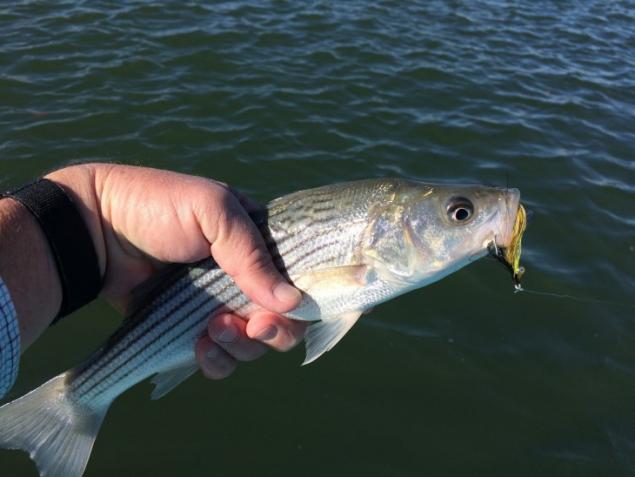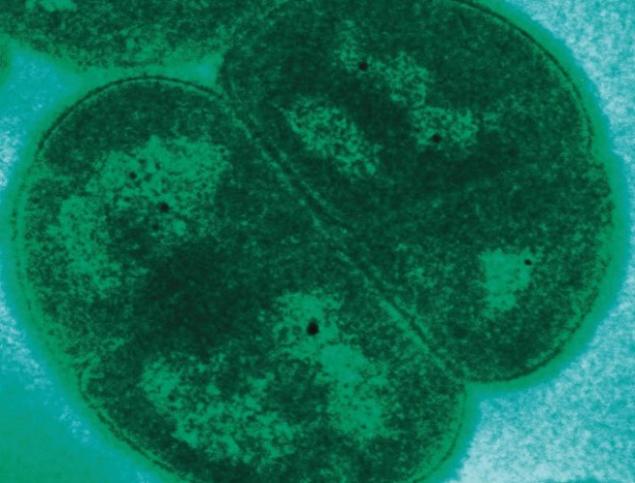1337
10 living beings, able to survive a nuclear war
Chances to survive a nuclear war there are not many, but they are. The site tells the story of ten organisms that are resistant to such an extent that the atomic bomb can not destroy their populations. amoeba nuclear war transcend h2> The simplest form of life can survive any global cataclysm. Amoebas can suspend all life processes and to carry out in a "frozen" state as many time. These single-celled organisms in large quantities are found in almost all parts of the world, so destroy them all is not possible.
Cockroaches h2> This insect is able to withstand huge doses of radiation. The scientists found that cockroaches were in the explosion of a nuclear bomb in Hiroshima just 300 meters from the epicenter, were still alive.
Scorpion h2> Scorpions transferred as ultraviolet, and nuclear radiation. They can adapt to any conditions of life. In our time, they are found on all continents except Antarctica.
Wasps braconids h2> braconids wasps lay their eggs in the bodies of some brothers: aphids, bark beetles, butterflies, caterpillars and other insects, piercing the upper part of their skin huge "ovipositor". Cells braconid larvae infected with viruses that help them to suppress the activity of the immune system of insects on which they parasitize and thus survive.
Lingulyaty - the oldest living things on the planet h2> Lingulyaty - class type Brachiopods animals. In fact, it is common shellfish. The name comes from the Latin word lingula, translated as "language". It is similar to the language of their shell.
440 million years ago during the Ordovician-Silurian extinction events have disappeared about 60% of species of marine invertebrates. 364 million years ago there was a Late Devonian extinction. During this period, the total number of species of marine life decreased 2 times. During the "great" vanished Permian extinction of about 95% of all species of plants and animals. It happened 251 million years ago. More than half of all species of living organisms descended from the path of evolution 199 million years ago during the Triassic extinction. 65, 5 million years ago to the ground dinosaurs disappeared, and with them - yet 18% of all species. This extinction of scientists called the Cretaceous-Paleogene. Surprisingly, lingulyaty without any problems experienced all five mass extinctions. It seems that in extreme cases these animals are able to burrow deep into the ground and hibernate. But this is only an assumption.
Scientists do not know how lingulyaty managed to survive 99% of all species that ever existed on Earth. There is little doubt that they are able to survive in a global nuclear war.
Drosophila h2> fruit fly Drosophila can tolerate high doses of radiation - about 64,000 rad. If the above-mentioned cockroaches are able to survive a nuclear war due to slow cell division in Drosophila have another trump card. They reproduce very quickly and have a total of 8 chromosomes.
People h2> Are you surprised that there are people on the list? And in vain! Despite the fact that people do not have a high resistance to radiation, chance our species to survive a nuclear war are quite high
Fundulus h2> Fundulus can live anywhere. Representatives of this species, scientists found in the most polluted areas of the sea, for example in the field of oil spills. And yet the fish have time to go to space! Several individuals were taken to the space station Skylab in 1973. Scientists have found that weightlessness does not cause much inconvenience to them (the presence of water in a closed container, of course). Fundulusy even produced offspring in space!
tardigrades h2> tardigrades (or water bears) - a close relative of insects and spiders. Adult size of this species is less than 1 millimeter. Interestingly, adult water bears are different from animals that have just hatched from the eggs, only size. The number of cells in tardigrades not increased since birth. They (the cells) simply grow in size.
The bacterium Deinococcus Radioduran h2> This bacterium - the most resistant to radiation of life on Earth. It can self-restoring damaged areas of DNA , and this process is very fast. Members of the scientific community in our time exploring the body, trying to figure out whether it can be used to treat humans.
amoeba nuclear war transcend h2> The simplest form of life can survive any global cataclysm. Amoebas can suspend all life processes and to carry out in a "frozen" state as many time. These single-celled organisms in large quantities are found in almost all parts of the world, so destroy them all is not possible.

Amoeba resistant to radiation and genetic mutations they simply can not be. These organisms can multiply rapidly enough so that even if 99% amoebas destroy the surviving representatives as soon as possible to resume population of the species.
Cockroaches h2> This insect is able to withstand huge doses of radiation. The scientists found that cockroaches were in the explosion of a nuclear bomb in Hiroshima just 300 meters from the epicenter, were still alive.

Despite the fact that modern nuclear bombs more powerful than the bomb "Little Boy" was dropped on Hiroshima, extinction of cockroaches in the case of a global nuclear war is unlikely. "Mythbusters" claim that 10% of the cockroaches in their trial survived at the level of exposure of 10 thousand rad. For a man, this is considered a lethal dose, death occurs within a few hours.
The fact that the growth rate of cockroaches are extremely low. Cells cockroaches divided only once in 48 hours, so the risk of mutation is minimal.
Scorpion h2> Scorpions transferred as ultraviolet, and nuclear radiation. They can adapt to any conditions of life. In our time, they are found on all continents except Antarctica.

Scorpio can survive even a complete freeze. In which case, a nuclear winter, they simply "wait out" in a state of suspended animation, and when the temperature of the Earth will rise again, back to life.
Scorpios are often hidden in holes or cracks. These shelters will provide them some physical protection, for example, precipitation and radiation penetrating ionizing radiation.
Wasps braconids h2> braconids wasps lay their eggs in the bodies of some brothers: aphids, bark beetles, butterflies, caterpillars and other insects, piercing the upper part of their skin huge "ovipositor". Cells braconid larvae infected with viruses that help them to suppress the activity of the immune system of insects on which they parasitize and thus survive.

Oh someone who, while braconids we definitely should be wary. In 1959, scientists found that some of the wasps of this species can withstand radiation exposure in 1800 Gray. At the same time people go to the other world, received a dose of 9-10 Gray.
Lingulyaty - the oldest living things on the planet h2> Lingulyaty - class type Brachiopods animals. In fact, it is common shellfish. The name comes from the Latin word lingula, translated as "language". It is similar to the language of their shell.

In the Earth's history there were five mass extinctions (perhaps we live in the era of the sixth). list them:
440 million years ago during the Ordovician-Silurian extinction events have disappeared about 60% of species of marine invertebrates. 364 million years ago there was a Late Devonian extinction. During this period, the total number of species of marine life decreased 2 times. During the "great" vanished Permian extinction of about 95% of all species of plants and animals. It happened 251 million years ago. More than half of all species of living organisms descended from the path of evolution 199 million years ago during the Triassic extinction. 65, 5 million years ago to the ground dinosaurs disappeared, and with them - yet 18% of all species. This extinction of scientists called the Cretaceous-Paleogene. Surprisingly, lingulyaty without any problems experienced all five mass extinctions. It seems that in extreme cases these animals are able to burrow deep into the ground and hibernate. But this is only an assumption. Scientists do not know how lingulyaty managed to survive 99% of all species that ever existed on Earth. There is little doubt that they are able to survive in a global nuclear war.
Drosophila h2> fruit fly Drosophila can tolerate high doses of radiation - about 64,000 rad. If the above-mentioned cockroaches are able to survive a nuclear war due to slow cell division in Drosophila have another trump card. They reproduce very quickly and have a total of 8 chromosomes.

People h2> Are you surprised that there are people on the list? And in vain! Despite the fact that people do not have a high resistance to radiation, chance our species to survive a nuclear war are quite high

Firstly, the number of nuclear weapons in the world is actually reduced, which means fewer bombs. Second, technically destroy all people, without exception, very difficult, because they are scattered around the world.
Although some modern bombs is 1,000 times more powerful than the bomb dropped on Hiroshima, this does not mean that if they die in an explosion 1,000 times more people. A lot depends on where it will be dropped deadly projectile. For example, if an explosion happens in the taiga, dozens of die maximum of hundreds of people. If in the densely populated city such as New York, the number of victims could be in the millions. The important role played by other factors such as terrain, or the nature of the explosion (land, air, and so on. D.)
In the world there are thousands of shelters. There is no doubt that in the event of a nuclear apocalypse, many people will hide in them. Most likely, the survivors will be sufficient to enable them to repopulate the earth. However, after reaching the surface, these people will be forced to "return" to the stone age, and all scientific and technical achievements of our civilization, they will have a long time to forget.
Fundulus h2> Fundulus can live anywhere. Representatives of this species, scientists found in the most polluted areas of the sea, for example in the field of oil spills. And yet the fish have time to go to space! Several individuals were taken to the space station Skylab in 1973. Scientists have found that weightlessness does not cause much inconvenience to them (the presence of water in a closed container, of course). Fundulusy even produced offspring in space!

Their main secret - the ability to quickly adapt to changing conditions.
tardigrades h2> tardigrades (or water bears) - a close relative of insects and spiders. Adult size of this species is less than 1 millimeter. Interestingly, adult water bears are different from animals that have just hatched from the eggs, only size. The number of cells in tardigrades not increased since birth. They (the cells) simply grow in size.

When tardigrades found in the hot springs at great depths, the researchers decided to find out what conditions they will be able to move. In December 2006, a scientific journal published an interesting article. It was a speech that one of the representatives of this type are stored in a museum in a dry environment for over 120 years, suddenly moved the foot!
The research helped to find out what really tardigrades can withstand extreme conditions: they can literally boil, squash, freeze, send into space a few decades hold no water. All this does not prevent "clinically dead" organisms subsequently come to life!
In 1998, Japanese researchers Kunihiro Seki and Mosato Toёsima put two species of water bears in tiny containers, which were then lowered into the liquid fluorocarbon. Animals about half were under incredible pressure of 600 megapascals. This is about 6 times greater than the pressure at the bottom of the Mariana Trench (the deepest point of the world ocean). Amazingly, 82% of tardigrades, and 96% of the individuals of another species able to survive
But most of all occasions to surprise the experts appeared in 2007, when the water bears were sent into orbit by the space satellite Foton-M3. Adult tardigrades and eggs had a week and a half in a box, attached to the outer wall of the satellite. They were protected from the lethal vacuum or ionizing rays and ambient temperature was -272 ° C! Amazingly, 68% of tardigrades has successfully transferred this test. who visited the space eggs in water bears in the viability plan did not differ from the rest.
Unfortunately, researchers do not know exactly what caused the amazing endurance tardigrades. Currently, there are active research.
The bacterium Deinococcus Radioduran h2> This bacterium - the most resistant to radiation of life on Earth. It can self-restoring damaged areas of DNA , and this process is very fast. Members of the scientific community in our time exploring the body, trying to figure out whether it can be used to treat humans.

The bacterium Deinococcus Radioduran today is used to remove various contaminants. And she can become a "time capsule"! If people would face mass extinction, for example, nuclear war, scientists, geneticists will be able to "record" the message in the DNA of Deinococcus Radioduran. Even after 100 generations, it will remain unchanged.
At this point, scientists can only speculate why the bacterium Deinococcus Radioduran become so stable.
via www.publy.ru/post/19878
Salvador Dali and Gala: love on the brink of insanity
In the depths of the ocean found eerie black "ninja shark"

































